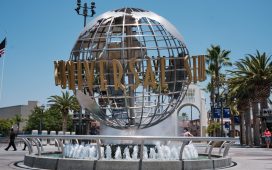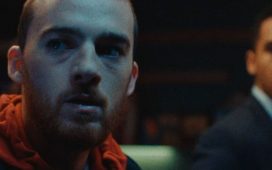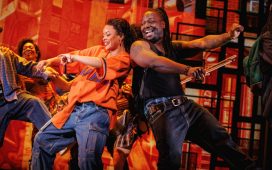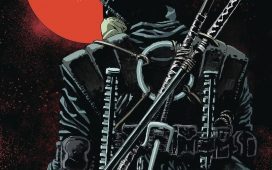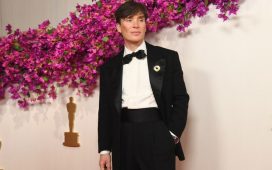In the doc world, Chris Hegedus and D.A. Pennebaker are a legendary filmmaking combo, and their presence has been felt at IDFA since the festival first began. The pair attended regularly over the years, but this year, sadly, only Hegedus was able to make the trip, having bade farewell to her longterm partner just a few months before (Pennebaker passed away on Aug. 1, at the age of 94). It was expected, then, that Hegedus’s Film Talk would be a sombre affair, but the filmmaker spoke brightly and articulately about the pair’s work together, opening with a fascinating clip from Pennebaker’s 1962 film “Jane,” a portrait/sketch of Jane Fonda’s disastrous attempt to conquer the Broadway stage, at the age of 25 (the play, “The Fun Couple,” closed after just three performances).
Speaking to writer Pamela Cohn, Hegedus said she came to the film world almost by accident. “When I grew up,” she said, “I didn’t really know that women could be filmmakers. I mean, I’d heard there were some women in Hollywood, in the back room, with white gloves on, gluing films together. But I didn’t really have that as an image of something that I could do. [Instead] I went to art school, and I went at a time when art was really deconstructing itself. It was getting rid of art objects, it was turning into conceptual art, and it was something that was interesting to be part of, because it was a movement that was starting while I was actually part of the art world. But I didn’t want to do that.”
It was during this time that Hegedus found out about the avant-garde film movement and began making experimental films. “I went to a couple of different schools,” she recalls, one being the Nova Scotia School of Art and Design (NSCAD). “They [invited] all sorts of people there, from Andy Warhol to Philip Glass—y’know, whoever was at the height of their art at the time—and they let the students do whatever they wanted. So I decided I would put on a film festival.” This led her to the catalog of Drew Associates, a loose cabal of cinema vérité filmmakers, assembled by Robert Drew, that included directors such as Pennebaker, Richard Leacock and Albert Maysles.
“These films, even though they’re famous now, very few of them were on TV,” she said. “So you really only saw them if you were at a university or a festival that was screening them. I decided to rent some.” She couldn’t remember them all, but one that stood out was “Primary,” Drew’s film that follows presidential candidate John F. Kennedy and Hubert Humphrey during the 1960 Wisconsin primary. “They instantly changed my life,” she enthused. “I didn’t know that you could film real-life stories in that way. And so I stopped doing experimental films and decided that’s what I wanted to do.”
Hegedus met “Penny” (as she calls Pennebaker) in New York in the mid-’70s, and their first film together was “Town Bloody Hall” (1979), which saw Hegedus going through Pennenaker’s footage of an anarchic meeting of minds that occurred in 1971 when the famously macho writer Norman Mailer hosted a debate on the feminist movement. It was the beginning of a long and fruitful collaboration, which Hegedus illustrated with clips from films as diverse as “DeLorean” (1981), “Depeche Mode 101” (1989), “The War Room” (1993), “Down From the Mountain” (2000), “Al Franken: God Spoke” (2006), and “Kings of Pastry” (2009).
Asked about the future, Hegedus showed no signs of stopping. “Since I made ‘Startup.com,’” she said, referring to the 2001 documentary she made with Jehane Noujaim, “I’ve made a lot of films without Penny, or where Penny had been more of my cheerleader, in a sense. Especially on films like ‘Unlocking the Cage’ [2016] — he didn’t come and shoot it with me, but he was definitely there to look at it and be there for me. I mean, that was part of our partnership. A lot of these films we’d shoot just by ourselves, and edit by ourselves, and in the days of film we’d even cut our negative by ourselves. We were true mom-and-pop grocery-store kind of filmmakers. The process slowly became different through the years, especially with digital, where you could go out and shoot the entire film by yourself. But I have been producing quite a few different projects, and working as a creative consultant. I directed a small project this spring, a music film, and I will continue making films in some version or another.”
More pressing was the question of what to do with all the material that she and Pennebaker amassed over the years. “We have this huge archive of films and equipment,” she explained, “and it documents a certain history of film, because we have this equipment that was some of the very first equipment that was engineered to do synch-sound films. I’m looking to find a home for our archive, and it’s a very [important] thing. Because, unlike fiction films where you have maybe 20 takes of somebody doing [the same scene], in documentary films you have all these outtakes that have a lot of very [different] things in them. They really are the history of our time, and they could be interesting to sociologists or historians or geographers or fashion people or whoever. Because you film so much more than you use, and that footage has value.”
She sighed. “But there’s a lot of stuff…”




